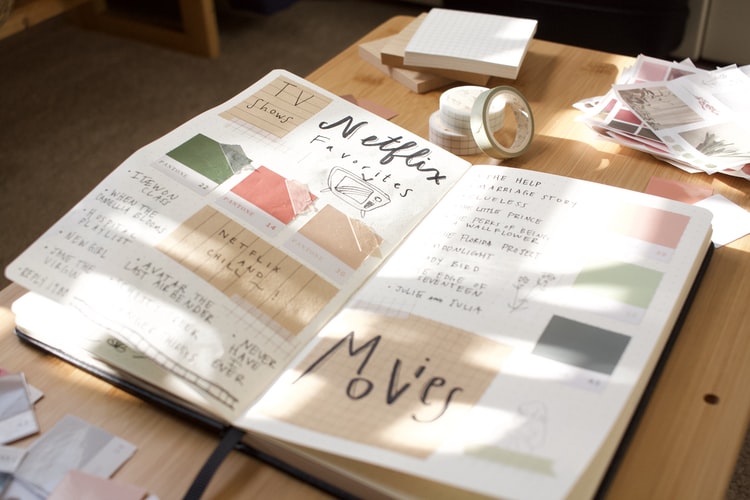What Are Fun Ways To Teach Reading?
“Today a reader, tomorrow a leader,” were the wise words of Margaret Fuller—an American activist and journalist of the late 19th century. To say Fuller had a good point would be an understatement.
Teaching proper reading skills to students, especially high school students, is crucial if you want them to grow into individuals who can think for themselves, judge the people and situations around them adequately, and look at the world from more than one perspective.
Critical reading is also a necessary skill for any intern, successful college student, and young professional who wants to succeed in any career they choose.
Unfortunately, in the age of the internet and the addiction to social media, it’s becoming more challenging to get students to take up reading on their own. Here are some fun ways to teach reading to high schoolers so that you ignite their love for reading, broaden their attention spans, and enhance their critical thinking skills.

Credit: ThoughtCatalog
Fun Ways To Teach Reading—Show Your Students Some Good Time
Reading has become a somewhat notorious topic in relation to how infrequently the young generations read. Reading has had to compete with novel ways of occupying people’s free time—each more entertaining than the other. First, there was radio, then television, and now we have the internet, and a whole slew of pastimes and distractions it has brought with it.
Because of these other forms of entertainment, your priority when teaching reading to students should be to make it fun. Luckily, high schoolers are curious creatures, and they have a range of different interests during their adolescence—all the characteristics you can use to your advantage in the classroom.
Here are some stimulating ideas to teach reading in new exciting ways:
- Make reading a part of your students’ existing hobbies
- Take your students to see a play
- Assign a pastiche piece for homework
- Include contemporary poetry in your classrooms
- Teach classic literature through modern movie adaptations

Credit: Alexis Brown
Reading Should Be a Hobby First
You can’t make students fall in love with reading if you make them approach the activity as an obligation. When thinking of your students’ hobbies, social media comes to mind instantly.
Scrolling through their phones, your students must be reading some forms of text, however devoid of language conventions or filled with ellipses those texts may be. You can use the content your students are already devouring to teach reading in the classroom in more than one way. Here are some practical suggestions:
- Print out interesting Instagram posts and bring them to class. Whether it’s politicians advocating their causes, influencers advertising products, or Timothée Chalamet promoting his new movie, you can take Instagram—or other social media—posts and make your students analyze their captions. Are they long or short? How many other accounts are tagged, and why? Are the post creators using a lot of slang, or do they lean to a more formal language?
- Discuss social media advertising. Teach your students to notice how and when the content they’re following is sponsored even when the PR on social media is done covertly. This can enhance their critical thinking skills and make them learn different writing strategies.
- Photos or texts—what do your students prefer? Instagrammers are debating about whether the platform is conducive to text posts or reserved only for photo-sharing. Ask your students if they follow any accounts with text posts only. Maybe they’re into Instagram poetry, positive affirmations, or song lyrics. Make them explain why they like such posts and if that is all the leisure reading they do. If your students believe Instagram is solely for photography, ask them what other social media is suitable for text posts? Go over these questions with examples, so your students practice reading while discussing.

Credit: Solen Feyissa
Words Come to Life on a Stage
The study of plays in the English subject curriculum is the perfect opportunity to take your students out of the classroom and organize a trip to the theatre.
You undoubtedly know how amazing Shakespeare was, but your students might have a harder time breaking through the strange early modern English language to realize how genius his works are. Seeing as the Bard had written his opus to be seen rather than read, you should give that opportunity to your students.
A good idea would be to read the play before and after seeing it performed on stage. You can then ask your students to reflect on how different the experience of reading was before and after seeing the action and the emotions played out by real people.
Shakespeare is an obvious example, but you can research your local theatre’s program and see if you can find other plays. There are bound to be other renditions of classic literature and original contemporary works that would intrigue your students.
Reading and Writing Go Together
You cannot practice reading skills without honing writing skills and vice versa. The same rule applies when teaching those skills to students. One fun way to make your students read more actively is to assign them homework for which they need to write their versions of the story—pastiches.
Your students—or at least the majority of them—are also bound to be familiar with fan fiction, a phenomenon that grew to immense popularity in recent years due to social media sites like Tumblr. Writing their own renditions of the stories they love won’t be a new hobby for them.
Pastiches might be more constricted than fan fiction since your students won’t be allowed to change major plot points. You can combine the two forms of writing and have your students bring you their versions of a story from a novel you’re doing. Maybe they wouldn’t have Jay Gatsby die at the end of Fitzerald’s Great American Novel, or perhaps they would like it if Boo made an earlier appearance than he had in Lee’s “To Kill a Mockingbird.”
However you decide to play out the activity with your students, make them explain any change they made, and whether it alters any crucial messages in the original story or novel. They cannot reflect on such questions without practicing conscious reading.
People Still Write Poetry—And a Lot of It
If you’re looking to make your students interested in poetry, why not start with something short and contemporary? One prevalent bias people tend to have towards poetry is that it is pretty much a dead form of creative writing. Students are also warded off from enjoying the unique reading experience poetry can give them because of the complexity of the language in most classic poems that they study in high school.
You might not be in the position to alter your entire curriculum, but you can incorporate some very much alive-and-kicking poetry writers and their work in parts of your lessons. With only a little research, you are bound to come across pieces suitable to your lesson or teaching preferences.
Teaching contemporary poems has several benefits, like making your students realize that poetry:
- Is alive and a legit form of creative writing
- Does not always contain language that is difficult to decipher or understand
- Captures complex themes, motifs, and emotions in a way that other forms of writing can’t
A bonus advantage of having your students familiarize themselves with contemporary poems is that they can understand classic poetry better too. They will be more open to reading the pieces that they had previously thought boring or difficult, and they will be able to understand the conventions of writing poetry and different forms of verse.
How About Bringing Netflix Into the Classroom?


Credit: Emily Park
If, for some reason, you can’t take your students to see a play, why not watch movie adaptations of classic literature with them? Examples are countless, but perhaps you can consider the modern reimaginings of classic tales if you want the reading experience to be particularly fun.
There are many variations of the activity that would contain the book and movie study for the classroom. For example:
- Have your students watch a movie for homework and discuss it in class
- Organize a lesson in which you’ll see a movie together in the classroom
- Make students watch the movie first and then read the book to catch any similarities and differences
- Have students read the original works first and then study the movie adaptation
Here are some of the most popular examples of modern reimaginings of classic literature in movies:
| Movie | Book |
| The Lion King (1994) | Hamlet |
| Clueless (1995) | Emma |
| Easy A (2010) | The Scarlet Letter |
| 10 Things I Hate About You (1999) | The Taming of the Shrew |
| She’s the Man (2006) | Twelfth Night |
Many debates could be sparked by reading the classics and watching their original interpretations in modern—and highly popular—movies that all deepen the reading experience. Here are some questions you can discuss with your students after watching these movies:
- Why that play or novel was convenient and possible to turn into a movie set in the modern day and age
- How the elements that were used in the original works and preserved in the movies are still relevant today
- What characters or plot points the movie creators didn’t use and why
- Whether some changes incorporated in the movie alter any character arcs or erase meaningful elements of the original story
Here’s What To Consider When Teaching Reading
Although there are countless ways you can make reading fun for your students, you should always keep in mind that teaching reading is complex. Young adolescents’ short attention spans and minds distracted by phone notifications make it particularly tricky for teachers to awaken the love for reading in today’s youth.
When preparing any reading activity for your classroom, there is a lot of thinking and planning that should go into it.
Here are some points to consider when teaching reading:
- Whether the reading material is suitable for your students’ age and interests
- What reading skills you’re trying to teach your students
- Whether some of your students have viable reasons for struggling with reading
What Kind of Content Are You Using?
While getting students to read in class or do an essay on a piece of classic literature is a valid task for a teacher, your primary goal should be to encourage students to enjoy reading in their spare time. To this end, teaching only what is required by a school curriculum might not be enough.
Many exceptional novels are being published today that are not only written in contemporary, easy-to-understand language but that also deal with issues your students might be experiencing themselves, like the struggle of:
- Not fitting in
- Being discriminated against because of one’s gender
- Experiencing unrequited love or meeting one’s true love during adolescence
- Coming out as a member of the LGBTQ+ community
You can make a social media account for your class where students can share and discuss the novels they’ve read for leisure.
One Step or Skill at a Time
When teaching any lesson or activity, you must know what the aim of it is. Do you want your students to expand their vocabulary, or do you want them to practice comprehension and reading fluency?
Your activities should always be suited to the reading skill you want your students to practice, and you should also let your students know of the goal you set for the activity. It will give them additional motivation to read and a sense of accomplishment when they finish the task.
Help Your Students Break Through Their Reading Struggle
If you have students who are particularly hard to coerce into enjoying reading, the worst thing you can do is be tough on them and jump to the conclusion that they’re simply lazy. Your students can have multiple reasons why they might not like reading. Perhaps there are gaps in their prior knowledge due to poor elementary education. Maybe they fear they will be mocked by their peers and seen as nerdy if they display a passion for reading publicly.
Whatever the case, you should approach students who struggle with reading with care and patience. Take an effort to get to know them better and see what it is about reading that they find such a struggle. You can then start breaking through that struggle together and guide them into opening up to reading with carefully picked activities and assignments.
Bonus Reading Activities Ideas
As noted, there are countless ways you can make reading in the classroom a blast for you and your students. Here are some additional ideas to the ones already mentioned:
- Bring newspapers and magazines to class
- Have classic literature personality quizzes
- Compare song lyrics to literature authors
Punk Might Not Be Dead, But What About the Press?


Credit: Charisse Kenion
One way to make teaching argumentative writing or media literacy skills fun to your students is to have them analyze texts in newspapers or magazines. They are great because you can find entries on a wide range of topics to fit your students’ individual interests. Perhaps you can have them do the digging and bring the material they like to class themselves.
Ask your students if they still read the printed newspapers or magazines at all or have switched them for online content entirely? If so, what standardized media company they often read online? Do they only skim through blog entries and not read official newspapers?
Are You More of a Macbeth or a Richard III Type of Villain?
SparkNotes website has made classic literature quizzes some of your high school students’ favorite distractions while studying. While the website isn’t an all-encompassing textbook nor a substitute for the actual reading of texts, you can use it to your advantage and organize quizzes in the classroom.
Your students, seeing they might have something in common with Macbeth or that their life would fit perfectly into a science fiction genre, will feel inclined to engage with books they’re reading more actively.
Is It Shakespeare or Drake Lyrics?
Another popular category of SparkNotes quizzes is recognizing whether a particular set of words is a work of a classic literature author or their favorite pop or hip hop artist.
Here are some examples of just how eerily similar these different eras and categories of writing can be:
| Shakespeare | Hip Hop Lyrics |
| We are such stuff that dreams are made on. (“The Tempest”) | The most benevolent king, communicatin’ through your dreams (Wu-Tang Clan, “Impossible”) |
| I was not born under a rhyming planet. (“Much Ado About Nothing”) | May the Lord protect me as the world gets hectic (Nicki Minaj, “Autobiography”) |
| More of your conversation would infect my brain. (“Coriolanus”) | Socrates’ philosophy and hypotheses can’t define how I be dropping these mockeries (Wu-Tang Clan, “Triumph”) |
Bringing this type of quiz into the class will make your students laugh, analyze the lyrics and poetry verses, and see that classic literature isn’t so different from the content they like to consume in their spare time.
How Would You Reshape Education?
Reading skills fall under the category of soft or 21-century skills. You should incorporate soft skills activities for your high school students into your classroom. Only then can you make them grow into young adults ready to meet the world in all its craziness and complexity of today.
If you believe it’s high time to reshape school culture and bring innovations in schools, write to us with your ideas and become a contributor to the cause—making American education equitable and inclusive for all.

